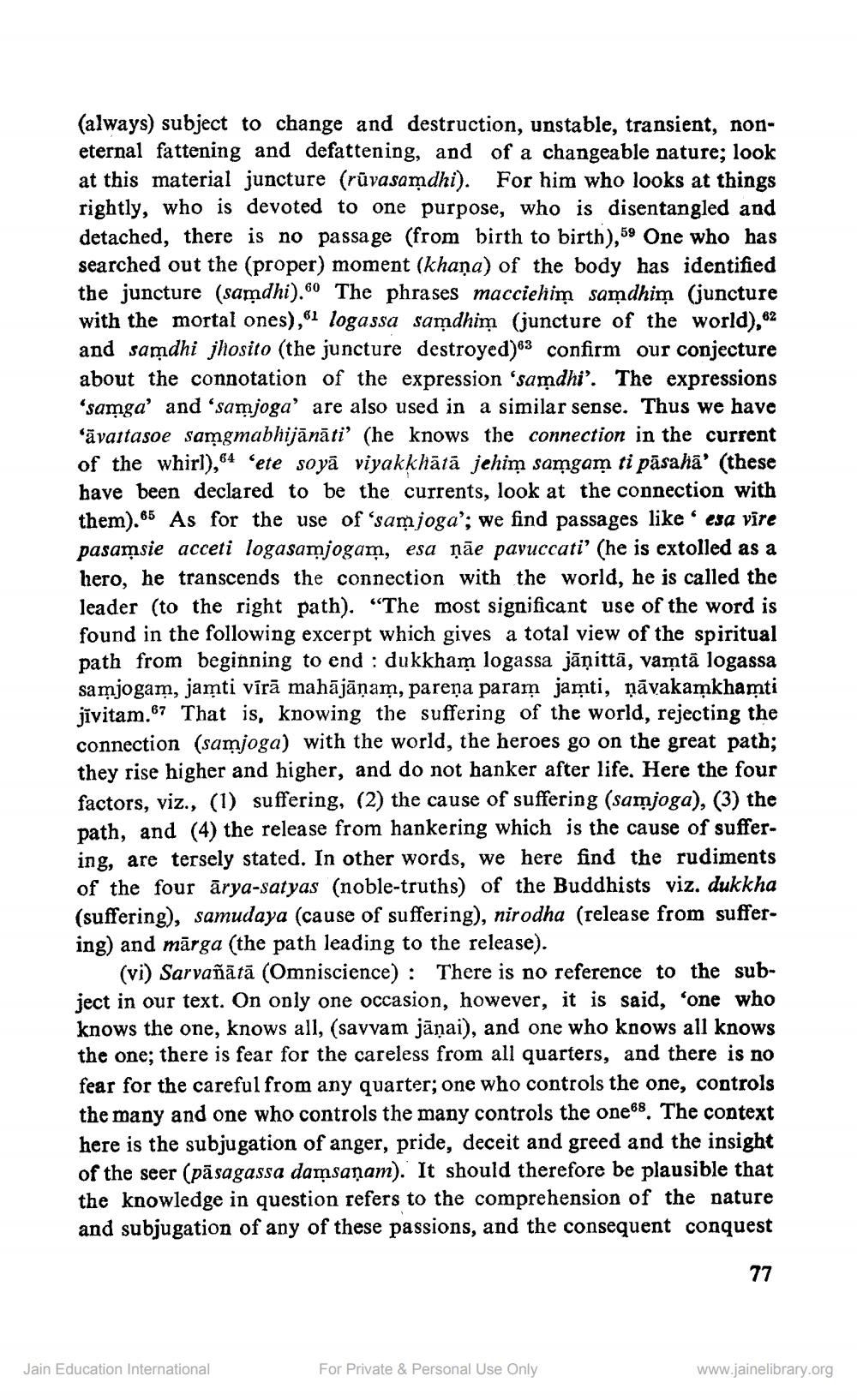________________
(always) subject to change and destruction, unstable, transient, noneternal fattening and defattening, and of a changeable nature; look at this material juncture (rūvasamdhi). For him who looks at things rightly, who is devoted to one purpose, who is disentangled and detached, there is no passage (from birth to birth),59 One who has searched out the (proper) moment (khaņa) of the body has identified the juncture (samdhi).60 The phrases macciehim samdhim (juncture with the mortal ones),61 logassa samdhim (juncture of the world), 62 and samdhi jhosito (the juncture destroyed)63 confirm our conjecture about the connotation of the expression 'samdhi'. The expressions 'samga' and 'samjoga' are also used in a similar sense. Thus we have "āvaitasoe samgmabhijānāti' (he knows the connection in the current of the whirl),64 fete soyā viyakkhātā jehim samgam ti pāsaha' (these have been declared to be the currents, look at the connection with them).65 As for the use of 'samjoga'; we find passages like esa vīre pasamsie acceti logasamjogam, esa ņāe payuccati' (he is extolled as a hero, he transcends the connection with the world, he is called the leader (to the right path). "The most significant use of the word is found in the following excerpt which gives a total view of the spiritual path from beginning to end : dukkham logassa jāņittā, vamtā logassa samjogam, jamti vīrā mahājāņam, parena param jamti, ņāvakamkhamti jīvitam.67 That is, knowing the suffering of the world, rejecting the connection (samjoga) with the world, the heroes go on the great path; they rise higher and higher, and do not hanker after life. Here the four factors, viz., (1) suffering, (2) the cause of suffering (samjoga), (3) the path, and (4) the release from hankering which is the cause of suffer. ing, are tersely stated. In other words, we here find the rudiments of the four ārya-satyas (noble-truths) of the Buddhists viz. dukkha (suffering), samudaya (cause of suffering), nirodha (release from suffering) and mārga (the path leading to the release).
(vi) Sarvañātā (Omniscience): There is no reference to the subject in our text. On only one occasion, however, it is said, 'one who knows the one, knows all, (savvam jāņai), and one who knows all knows the one; there is fear for the careless from all quarters, and there is no fear for the careful from any quarter; one who controls the one, controls the many and one who controls the many controls the ones. The context here is the subjugation of anger, pride, deceit and greed and the insight of the seer (pāsagassa damsaņam). It should therefore be plausible that the knowledge in question refers to the comprehension of the nature and subjugation of any of these passions, and the consequent conquest
77
Jain Education International
For Private & Personal Use Only
www.jainelibrary.org




